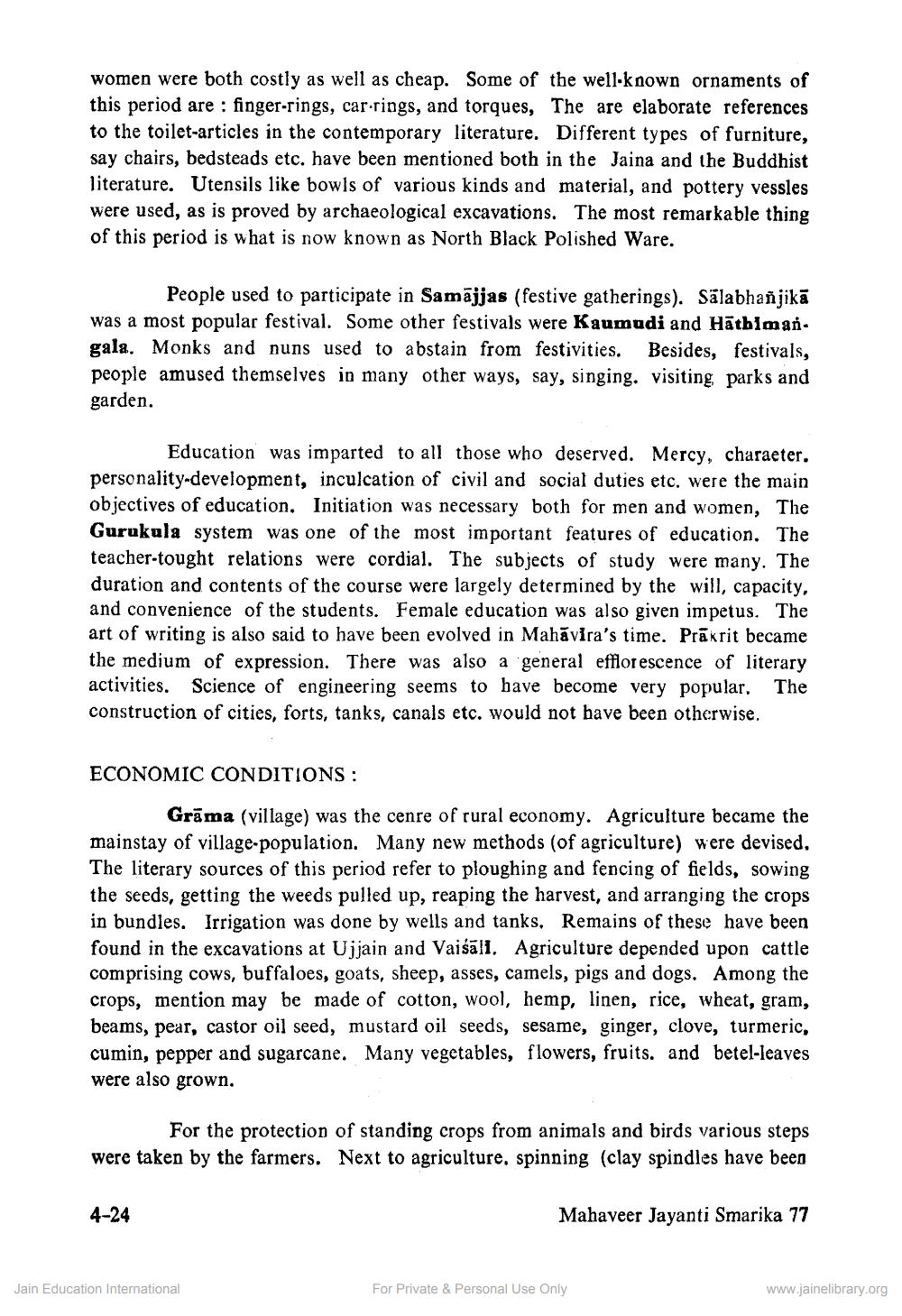________________
women were both costly as well as cheap. Some of the well-known ornaments of this period are : finger-rings, car-rings, and torques, The are elaborate references to the toilet-articles in the contemporary literature. Different types of furniture, say chairs, bedsteads etc. have been mentioned both in the Jaina and the Buddhist literature. Utensils like bowls of various kinds and material, and pottery vessles were used, as is proved by archaeological excavations. The most remarkable thing of this period is what is now known as North Black Polished Ware.
People used to participate in Samājjas (festive gatherings). Salabhanjikā was a most popular festival. Some other festivals were Kaumudi and Hātbiman. gala. Monks and nuns used to abstain from festivities. Besides, festivals, people amused themselves in many other ways, say, singing. visiting parks and garden.
Education was imparted to all those who deserved. Mercy, charaeter. personality-development, inculcation of civil and social duties etc. were the main objectives of education. Initiation was necessary both for men and women, The Gurukula system was one of the most important features of education. The teacher-tought relations were cordial. The subjects of study were many. The duration and contents of the course were largely determined by the will, capacity, and convenience of the students. Female education was also given impetus. The art of writing is also said to have been evolved in Mahā vira's time. Prakrit became the medium of expression. There was also a general efflorescence of literary activities. Science of engineering seems to have become very popular. The construction of cities, forts, tanks, canals etc. would not have been otherwise.
ECONOMIC CONDITIONS :
Grāma (village) was the cenre of rural economy. Agriculture became the mainstay of village-population. Many new methods (of agriculture) were devised, The literary sources of this period refer to ploughing and fencing of fields, sowing the seeds, getting the weeds pulled up, reaping the harvest, and arranging the crops in bundles. Irrigation was done by wells and tanks. Remains of these have been found in the excavations at Ujjain and Vaišali, Agriculture depended upon cattle comprising cows, buffaloes, goats, sheep, asses, camels, pigs and dogs. Among the crops, mention may be made of cotton, wool, hemp, linen, rice, wheat, gram, beams, pear, castor oil seed, mustard oil seeds, sesame, ginger, clove, turmeric, cumin, pepper and sugarcane. Many vegetables, flowers, fruits. and betel-leaves were also grown.
For the protection of standing crops from animals and birds various steps were taken by the farmers. Next to agriculture, spinning (clay spindles have been
4-24
Mahaveer Jayanti Smarika 77
Jain Education International
For Private & Personal Use Only
www.jainelibrary.org




